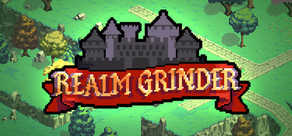

The platypus is a weird in-between, and its genome is a sort of bridge to our own evolutionary past. Chickens today have all three egg protein genes, humans have none, and the platypus has only one fully functional copy left. While birds and reptiles rely on three genes that encode for major egg proteins, the platypus appears to have lost the majority of these genes roughly 130 million years ago.

That said, their milk is not unlike what comes from a cow, or even a lactating human.Īs such, the platypus is probably not as dependent on egg proteins as other bird and reptile species because it can later feed their young through the lactation glands on its skin. It's not too much of a surprise, therefore, that monotreme genomes contain most of the milk genes that other therian mammals possess.Ĭasein genes help encode certain proteins in mammalian milk, but monotremes appear to have extra caseins with unknown functions. Platypus have 5X and 5Y chromosomes organised in a ring that appears to have broken apart into pieces over the course of mammalian evolution.Ĭomparing this chromosome information to humans, opossums, Tasmanian devils, chickens, and lizard genomes, the authors found the platypus's sex chromosomes have more in common with birds like chickens than mammals such as humans.īut while platypus lay eggs like chickens, they feed their young milk like therian mammals. The platypus, however, is the only known animal with 10 sex chromosomes (echidnas have nine). The authors were particularly interested in the animal's sex chromosomes, which appear to have originated independently from other therian mammals, all of which contain a simple XY pair. Meanwhile, monotremes as a whole appear to have diverged from marsupials and eutherian mammals about 187 million years ago.Įven after all that time, the semi-aquatic platypus has remained remarkably unchanged, fitting a niche in the Australian bush that many marsupials and mammals simply can't. The data collected from echidna and platypus lineages suggests their last common ancestor lived up to 57 million years ago. The genome of the platypus has now helped clear up some of the dates. Others think all three groups diverged at roughly the same time.

Some think the monotremes split off first, with marsupial and eutherians following suit. It's still unclear when all three of these distinct groups first began to diverge from one another. Therian mammals all give birth to live young, but monotremes are simply too different to be lumped in with that group as well.

Together, the latter two make up a subclass known as therian mammals. Today, living mammals are split into three groups, including monotremes, marsupials, and eutherians, or 'placentals'. Using a male platypus, researchers have now created a physical map with a highly accurate platypus genome. In previous years, a female platypus had some of its genome sequenced, but without any Y chromosome sequences, a lot of information was missing. "At the same time, decoding the genome for platypus is important for improving our understanding of how other mammals evolved - including us humans." "The complete genome has provided us with the answers to how a few of the platypus' bizarre features emerged," explains evolutionary biologist Guojie Zhang from the University of Copenhagen. Scientists think its genome could tell us secrets about our own evolution and how our distant mammalian ancestors went from laying eggs to giving birth. The genes of both are relatively primitive and unchanged, revealing a bizarre blend of several vertebrate animal classes, including birds, reptiles, and mammals.Īs different as the platypus might seem at first, it's those very differences that reveal our similarities and our shared ancestry with Earth's other vertebrates. Along with the spiky echidna, these two Australian animals belong to a highly-specialised group of mammals, known as monotremes, which both lay eggs but also nurse their young with milk. The duck-billed platypus is truly one of the oddest creatures on Earth.


 0 kommentar(er)
0 kommentar(er)
